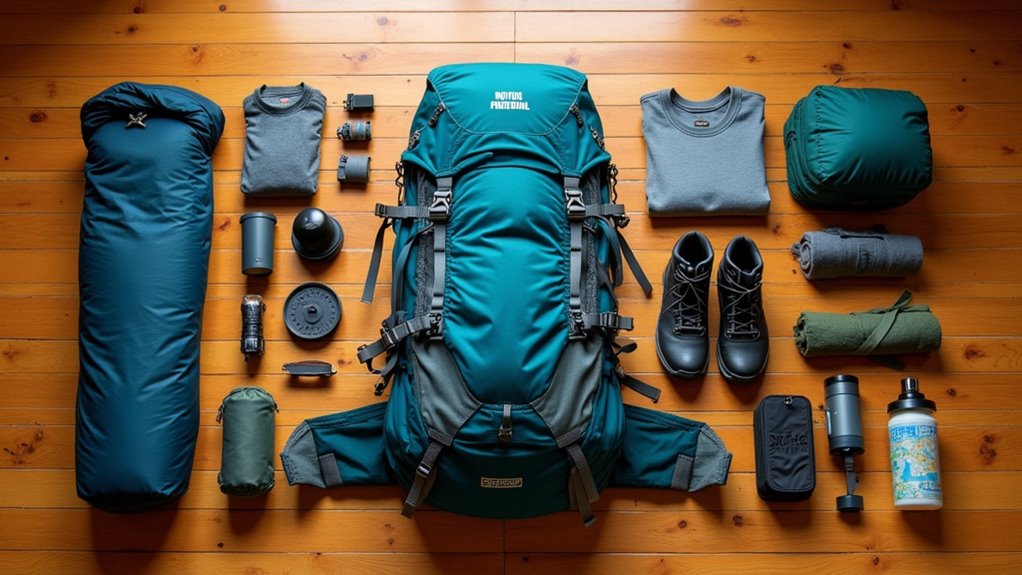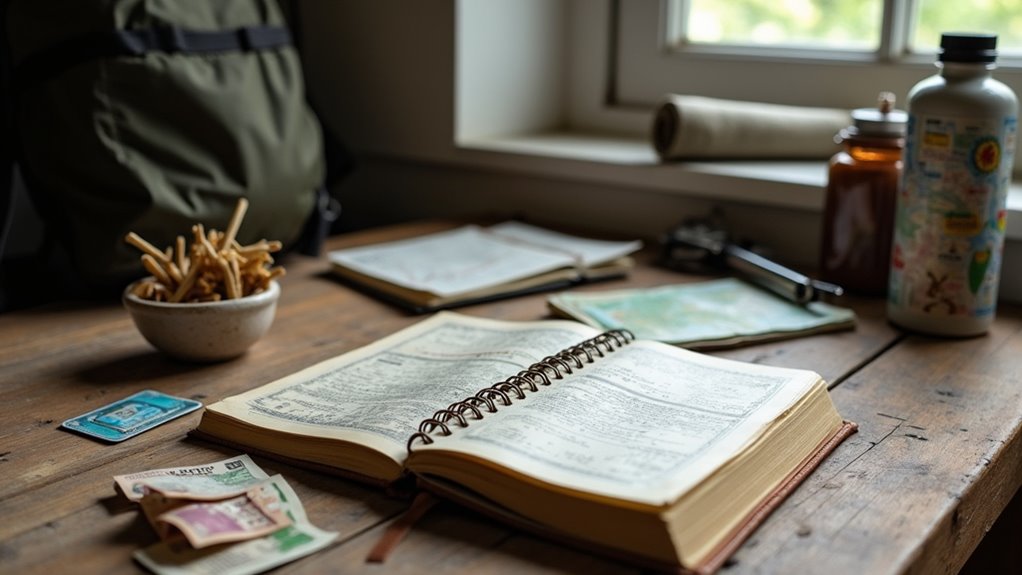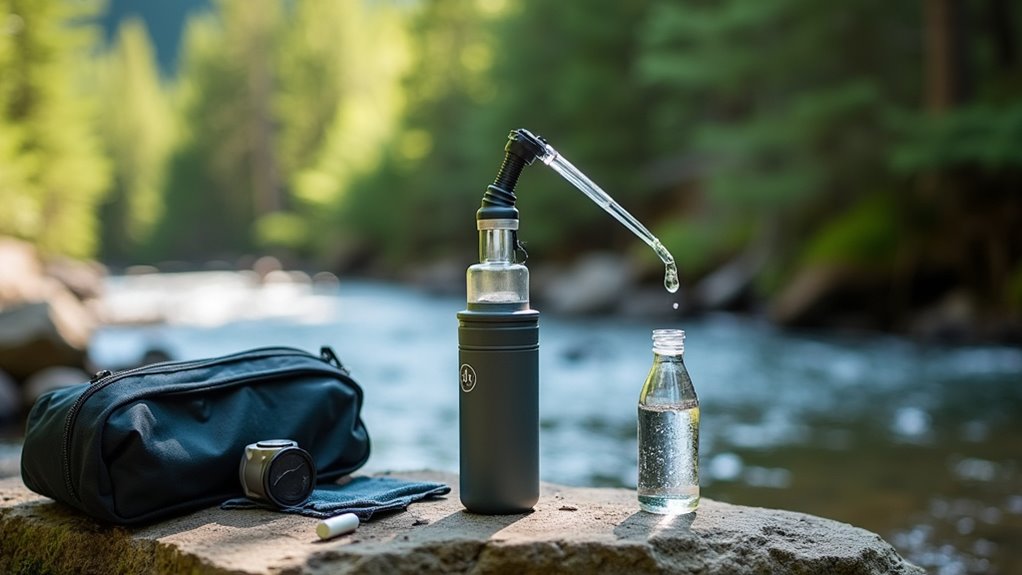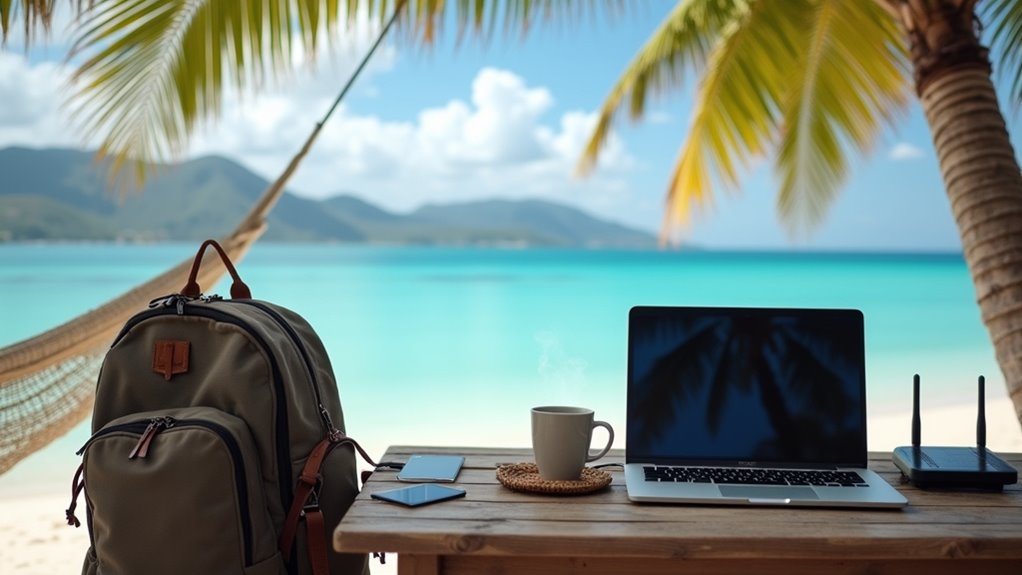When packing smart for backpacker adventures, you should choose a durable backpack that fits all essentials and opt for waterproof, sturdy boots for rugged trails. Prioritize a lightweight tent, warm sleeping bag, and efficient first aid kit for safety. Pack weather-appropriate clothing, including moisture-wicking layers, and bring a map, compass, and portable charger for navigation. Don’t forget hygiene supplies and a compact camping stove with water filtration. If you organize your gear efficiently, you’ll be better equipped to handle changing conditions ahead.
How do you assure you’re prepared for the unpredictable demands of a backpacking trip? It starts with packing the right gear. A durable, comfortable backpack is indispensable, as it’s your main method for carrying everything you’ll need. Waterproof, sturdy hiking boots or shoes are crucial, providing the support and protection necessary for traversing rugged trails and wet conditions. Choose a reliable tent for shelter, and don’t forget a quality sleeping bag and sleeping pad to guarantee warmth and comfort during overnight stays, especially if you’re camping in remote areas.
Pack a thorough first aid kit with supplies for treating injuries, blisters, or minor ailments. When selecting clothing, opt for a waterproof jacket to shield yourself from rain and wind. Bring versatile shirts in both short and long sleeves, quick-drying pants, and spare socks and underwear to adapt to changing weather and maintain hygiene. Hats, gloves, and other headgear help protect you from both sun and cold, which is critical if you’re trekking at higher altitudes or in unpredictable climates. Moisture-wicking base layers are essential for comfort and to help manage sweat during intense hikes.
Always pack a first aid kit and layer your clothing to stay protected from unpredictable weather and maintain comfort on the trail.
Safety and navigation are non-negotiable. Carry detailed maps and a compass, and add a GPS device for backup navigation, especially if you’re exploring unfamiliar terrain. Test runs are crucial for ensuring your gear fits well and is organized efficiently, helping you identify gaps or unnecessary items before your trip. An emergency bivvy and a loud whistle can be lifesavers in emergencies, providing shelter and a way to signal for help. Portable chargers are essential for keeping navigation devices and phones powered, particularly during extended backcountry trips where access to electricity is limited.
Maintain hygiene with travel-sized toiletries, biodegradable soap, a lightweight towel, and hand sanitizer. Bring sanitation supplies like toilet paper and a small trowel to minimize your impact on the environment.
For food preparation, pack a lightweight stove and fuel, compact cookware, and multipurpose utensils like a spork or multitool. Store your food in airtight containers, and assure water safety with purification tablets or a filter.
Always check the weather forecast before departure, and pack clothing layers, sun protection, and rain gear accordingly. Bring a repair kit, headlamp, packing cubes for organization, a multi-tool, and trash bags to manage waste responsibly. By planning each item with purpose, you’ll maximize preparedness, safety, and efficiency for every backpacking adventure.









